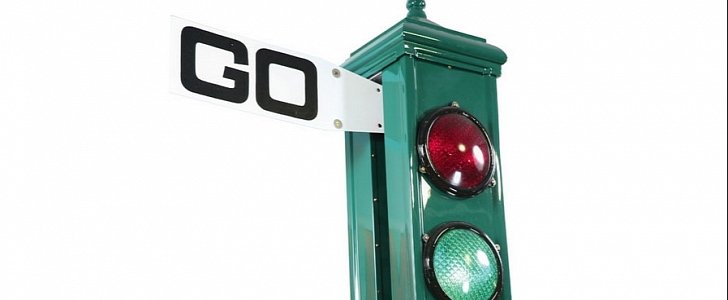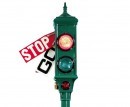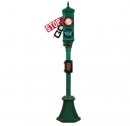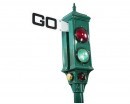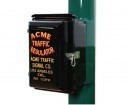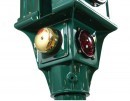It’s not every day that you get at a crossroad in life, but when you do, a pillar signaling the right direction would surely help. This could be what Frank J. Husbands of Los Angeles, California, thought when he patented the traffic regulator back in 1917. Perhaps it wasn’t flawless, but it did become the first step the US took towards relieving traffic congestion.
Believe it or not, getting stuck in traffic in LA has been a problem for almost a century, as it appears people would try to bring an end to it even before World War II. The Acme traffic signal was unique among all traffic signals with its red and green Corning heat-resistant glass lenses, lettering, semaphore arms, and blinking amber light.
The reason we’re talking about traffic lights from ancient times is because we have recently stumbled upon one that was restored. You see, these antiques are not only representative for a problem Americans are still struggling with but they also are quite rare. Even though by the late 1920s there were nearly 1,000 units around the city, only a dozen survived.
Of these, some made their way into private collections and persisted to this day, others exist in public collections, such as the Smithsonian Institute in Washington, D.C., and the Deer Park Winery and Automobile Museum in Escondido, California. The unit we’re talking about here is a meticulously restored example and is believed to be one of only 11 surviving original examples.
Aside from the pole and base that are modern reproductions, all of the internal operating gears and mechanisms have been preserved and fully restored, including the original Corning Glass lenses and indicator blades. Part of RM Sothebys collection to be auctioned in December, the operating mechanism has been updated with a self-contained computer and remote control to cycle the signal through its various functions.
The reason we’re talking about traffic lights from ancient times is because we have recently stumbled upon one that was restored. You see, these antiques are not only representative for a problem Americans are still struggling with but they also are quite rare. Even though by the late 1920s there were nearly 1,000 units around the city, only a dozen survived.
Of these, some made their way into private collections and persisted to this day, others exist in public collections, such as the Smithsonian Institute in Washington, D.C., and the Deer Park Winery and Automobile Museum in Escondido, California. The unit we’re talking about here is a meticulously restored example and is believed to be one of only 11 surviving original examples.
Aside from the pole and base that are modern reproductions, all of the internal operating gears and mechanisms have been preserved and fully restored, including the original Corning Glass lenses and indicator blades. Part of RM Sothebys collection to be auctioned in December, the operating mechanism has been updated with a self-contained computer and remote control to cycle the signal through its various functions.
